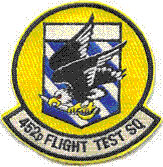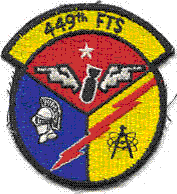
 |
Colonel (ret.) Christopher Miller is the Chief, Exercises and Training Division, Directorate of Operations, Plans, and Training, Joint Elimination Coordination Element, USSTRATCOM, Aberdeen Proving Grounds, Maryland. |
 |
Chris joined the Air Force Reserve Officer Training Corps at Grove City College in Grove City, Pennsylvania, and was commissioned a second lieutenant in 1982. He attended Undergraduate Navigator Training at Mather Air Force Base, California. He was assigned to the 452nd Flying Training Squadron, flying T-43A and T-37B aircraft, and in 1983 was a Distinguished Graduate. |
 |
In March and April 1983, Lt Miller was assigned to the 449th Flying Training Squadron at Mather AFB for Advanced Navigation Training, including grid and pressure differential techniques in the T-43A. |
 |
Following the Basic Survival Course and the Transport Water Survival Course (both at Fairchild AFB, WA), C-130 Weapons System Training (Little Rock AFB, AR), and Adverse Weather Aerial Delivery System (AWADS) training (Pope AFB, NC), he was assigned to the 37th Tactical Airlift Squadron, Rhein Main Air Base, Germany as a C-130E AWADS navigator, small computer officer, and tactics officer. |
 |
In 1986, Lieutenant Miller was assigned to the 41st Tactical Airlift Squadron, Pope Air Force Base, North Carolina, where he served as a C-130E AWADS Instructor Navigator, Executive Officer, and Chief of Tactics. In July 1986, he was promoted to Captain. He participated in the Volant Pine rotation to RAF Mildenhall on four separate occasions between 1986 and 1990. He completed Squadron Officer School in residence in 1988. |
 |
In 1989, Captain Miller was assigned to the 317th Tactical Airlift Wing as a Tactics Officer and Flight Examiner. In December 1989, he flew the assault on Rio Hato Air Base, Panama, during Operation Just Cause. In August 1990, Captain Miller deployed to Riyadh, Saudi Arabia, where he served for eight months in the 1610th Airlift Division (Provisional) during Operations Desert Shield and Desert Storm. He accumulated over 200 hours of combat, combat support, and contingency logistics time flying C-130E and C-130H missions throughout Saudi Arabia, Quatar, Kuwait, Oman, and the United Arab Emirates. |
 |
In 1991, he was assigned to Headquarters Military Airlift Command (later Air Mobility Command) Combat Tactics and Training Division as a Flight Examiner and as Chief of Theater Airlift Combat Employment. While there, he authored or co-authored numerous regulations dealing with the tactical employment of airlift aircraft. In addition, he participated as the Chief Navigation Umpire in the Airlift Rodeo at Pope Air Force Base, and served as Observer/Controller for two Joint Readiness Training Center (JRTC) exercises at Little Rock AFB, AR. |
 |
As a result of a "reduction in force", Captain Miller left active duty to join the Air Force Reserve, and was assigned as a C-130E Instructor Navigator to the 96th Airlift Squadron, Minneapolis, Minnesota. In 1993, he participated in the Coronet Oak rotation to Howard AFB in Panama. In 1994, he participated in Operation Provide Promise, the humanitarian airlift effort in the former Republic of Yugoslavia. |
 |
Also in 1994, Captain Miller entered the statutory tour program as a Senior Controller at the Headquarters Air Force Reserve Command Center, Robins Air Force Base, Georgia. He was promoted to major in 1995, and completed Air Command and Staff College by correspondence soon afterwards. |
 |
Also in 1996, Major Miller was assigned as a Tactics Instructor at the Advanced Airlift Tactics Training Center. He was promoted to Lieutenant Colonel on 29 September 2000. In October 2002, he graduated from Air War College by correspondence. While there, he was responsible for curriculum development of the Reserve/National Guard Mobility night vision training programs, and was the first to develop a NVG Ground Operations training program for flightline support personnel. The first graduates of this new training program were part of the first C-130 wing to deploy to Afghanistan for Operation Enduring Freedom. |
 |
In 2002, Lt Col Miller was assigned as the Reserve Advisor to the Commander, 21st Air Force, McGuire Air Force Base, New Jersey. Effective 1 October 2003, 21st Air Force was redesignated 21st Expeditionary Mobility Task Force, tasked with the oversight of the 621st and 721st Air Mobility Operations Groups. The position of Reserve Advisor was eliminated. |
 |
In January 2004, Lt Col Miller was assigned to the Air Staff at the Pentagon as the Chief of Operations and Plans, Office of Air Force Reserve. He was promoted to Colonel on 6 February 2004. From December 2005 through March 2006, he deployed to Djibouti in the Horn of Africa to serve as Deputy Commanding Officer for the Joint Special Operations Task Force (later Special Operations Command and Control Element)-Horn of Africa, Operation Enduring Freedom. |
 |
Colonel Christopher T. C. Miller retired on 1 September 2007 from the Active Reserve with 25 years, 3 months, 16 days total service, including 24 years, 3 months of active duty. He was an active aircrew member for more than 19 years, served in seven contingencies, set foot on all seven continents, flew around the world in a C130 (not all in one trip, of course) and recorded flight time north of the Arctic Circle and south of the Antarctic Circle. He was an instructor and flight examiner, a formal school instructor, and held staff positions at the squadron, wing, numbered Air Force, Major Command, and Air Staff levels. He is one of only three Air Force Reservists awarded the Missouri State Conspicuous Service Medal for his outstanding contributions to the Missouri National Guard, was named a "demigod" by commissioned officers in the Royal Norwegian Air Force, and is the only USAF Reserve navigator known to have recorded "nav hours" in an HH60G helicopter. |

Colonel Miller was a Master Navigator with over 4600 hours in C130, HC130, MC130, LC130, C17, C-160 (Transall), and G222 (C27) aircraft. His military awards and decorations include the Legion of Merit, the Meritorious Service Medal with four oak leaf clusters, the Air Medal, the Aerial Achievement Medal with one oak leaf cluster, the AF Commendation Medal, the AF Achievement Medal with one oak leaf cluster, the Joint Meritorious Unit Award, the AF Outstanding Unit Award with V device, one silver and one bronze oak leaf cluster, the AF Organizational Exellence Award with three oak leaf clusters, the Combat Readiness Medal with silver oak leaf cluster, the National Defense Service Medal with one bronze star device, the Antarctic Service Medal, the Armed Forces Expeditionary Medal, the Southwest Asia Service Medal with two bronze star devices, the Global War on Terror Expeditionary Medal, the Global War on Terror Service Medal, the Armed Forces Service Medal, the Humanitarian Service Medal with one bronze star device, the Military Outstanding Volunteer Service Medal, the Overseas Short Tour and Overseas Long Tour ribbons, the AF Expeditionary Service Ribbon with gold border, the AF Longevity Service ribbon with silver oak leaf cluster, the Armed Forces Reserve Medal with silver hourglass, bronze M, and bronze 3 devices, the AF Marksmanship ribbon with bronze star device, the AF Training ribbon, the NATO Medal, the Kuwaiti Liberation Medal (Saudi), and the Kuwaiti Liberation Medal (Kuwait).